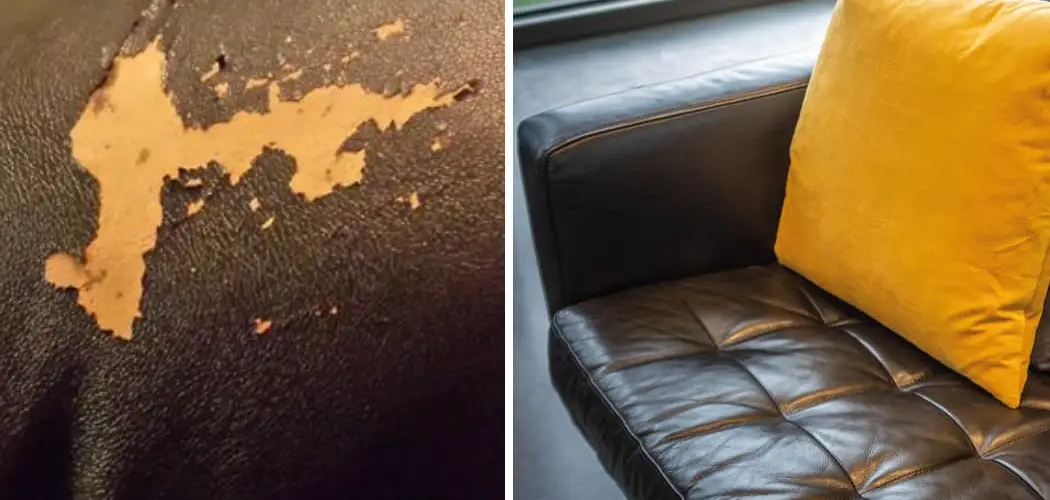Do you have a purse or shoes made of faux leather that is starting to peel? Don’t throw them out just yet! Here are some tips on how to prevent and fix peeling faux leather.
Leather is a luxurious material that is often used in furniture and clothing. It can be expensive, but it is worth the investment because of its durability. However, there are some things you can do to prevent faux leather from peeling. In this tutorial, we will show you how to take care of your faux leather materials so that they last longer.
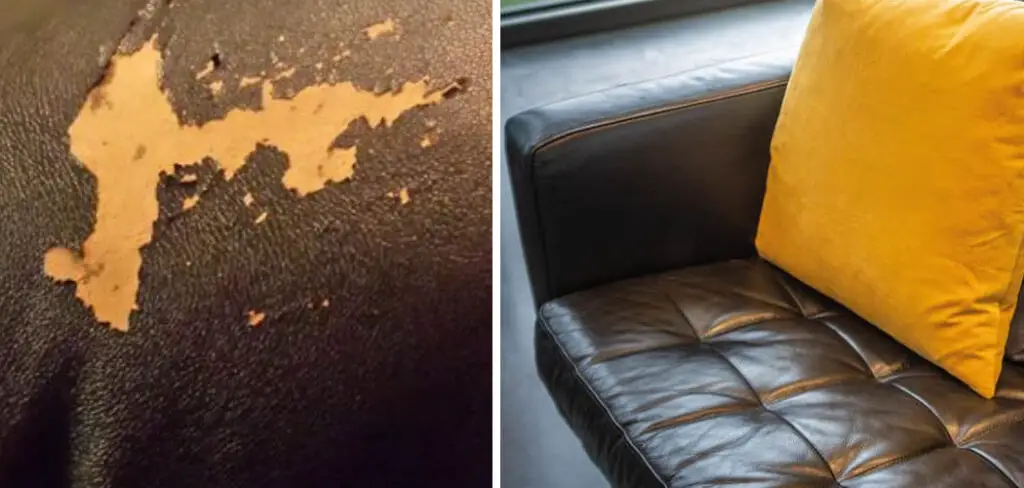
There are a few ways to prevent your faux leather from peeling. Read on to find out how to prevent faux leather from peeling for years to come!
Why Can Faux Leather Peel?
Faux leather, also known as faux leatherette or vegan leather, is a man-made material made to mimic the appearance and texture of real leather. It often is made from plastics or synthetic materials bonded together. However, because it is not real animal hide, it can be prone to peeling over time as the materials break down.
There is so many reasons such as poor quality, use of harsh cleaning chemicals or products, and prolonged sun exposure can also cause peeling.
Another cause for peeling is improper care and maintenance. Faux leather needs to be treated differently than real leather, so using the wrong cleaning products or methods can cause damage and peeling.
10 Steps on How to Prevent Faux Leather From Peeling
Step 1: Clean Regularly
The first step in prevention is cleaning your faux leather regularly. Use a clean, damp cloth to wipe down the surface of your faux leather and remove any dirt or debris. Make sure to use a gentle cleanser specifically made for faux leather so that you don’t damage the material. You can use specifically made faux leather cleaning wipes or a mild soap and water solution.
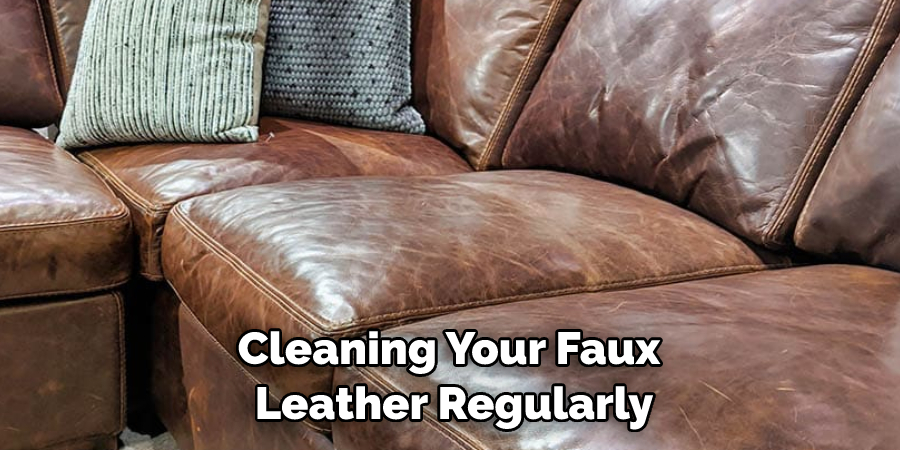
Step 2: Condition
Like your skin, faux leather needs to be regularly conditioned to keep it soft and prevent cracks. Use a faux leather conditioner and apply it evenly with a soft cloth. Make sure to follow the instructions on the conditioner for the best results. There is so many conditioners such as Saddle soap, mink oil, or leather honey. Best to use a specific one for faux leather.
Step 3: Protect
To protect your faux leather from scratches and peeling, use a protective spray made specifically for faux leather. This will add a layer of protection on top of the material and can prevent future damage.
Be careful not to oversaturate the material when applying the spray. Because of the added layer of protection, it is important to clean and condition your faux leather more regularly.
Step 4: Avoid Exposure
Exposure to direct sunlight or extreme temperatures can cause faux leather to crack and peel. Keep your faux leather items in a cool, dry place when not in use. If you are storing them for a long period of time, wrap them in a cloth or cover to protect them from dust and dirt.
Step 5: Don’t Overstuff
Don’t overstuff your faux leather bags or wallets. This can stretch the material and cause it to crack and peel over time. Use inserts or organizers to keep items from shifting around inside your faux leather bags.
Step 6: Use Coasters
If you have faux leather furniture, make sure to use coasters under drinks to prevent moisture damage. Wet spills left on the material can cause it to peel and crack over time. So, don’t forget the coasters!
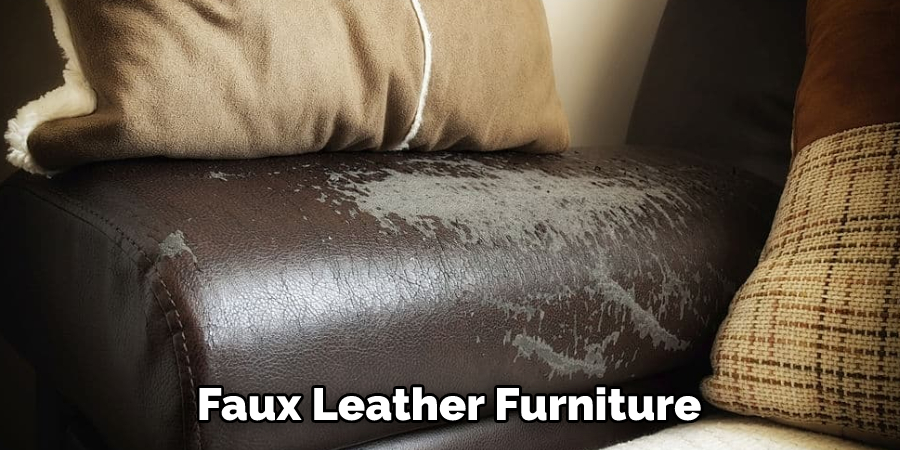
Step 7: Avoid Harsh Chemicals
Harsh chemicals, such as bleach or alcohol, can cause damage to faux leather. Avoid using these types of cleaners on your faux leather items, and stick to gentle cleansers specifically made for faux leather.
Step 7: Avoid Harsh Chemicals
Avoid using harsh chemicals or cleaners on your faux leather items. These can cause damage and lead to peeling. Stick to gentle cleansers specifically made for faux leather.
Step 8: Keep it Dry
To prevent moisture damage, make sure to keep your faux leather items dry. Wipe off any wet spills immediately and let them air dry before storing or using them again. You can also use a fan to speed up the drying process, but make sure it is on a low setting to avoid damaging the material.
Step 9: Use Soft Cloths
When cleaning or conditioning your faux leather, make sure to use soft cloths or brushes. Rough materials can scratch and damage the surface of the faux leather, leading to peeling.
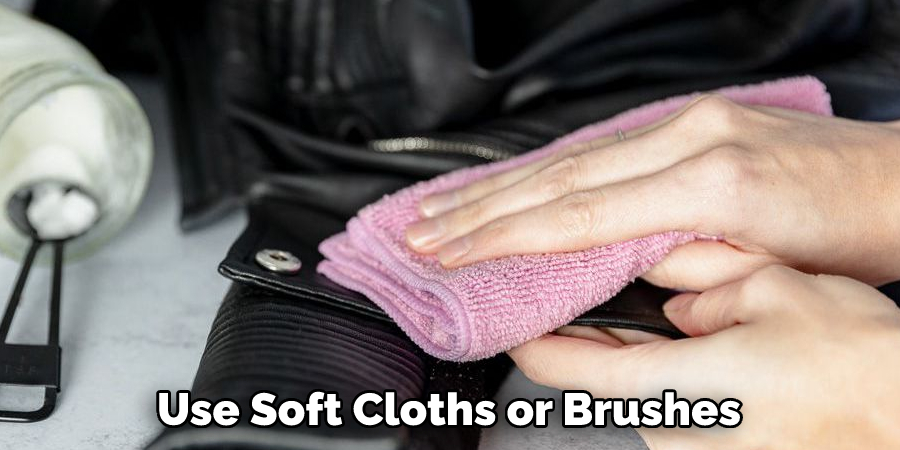
Step 10: Repair Damage Immediately
If your faux leather starts to peel or crack, repair it as soon as possible. Use a faux leather repair kit to patch up any damage and prevent it from getting worse. Use the kit according to the instructions and ensure the material is clean and dry before repairing it.
Following these steps can help keep your faux leather looking great for years to come. It is important to take the time to properly care for and maintain your faux leather items in order to prevent peeling and damage. Happy faux leather caring!
7 Tips and Tricks
- Keep faux leather away from heat sources and direct sunlight.
- Avoid using harsh cleaning chemicals or abrasive materials for wiping down the surface.
- Condition the material regularly with leather-specific products to maintain its appearance and durability
- Use a protective spray to create a barrier against wear and tear
- Avoid wearing sharp or rough objects that may scratch or tear the faux leather
- Store the material properly in a cool and dry place
- Choose high-quality faux leather to begin with for better durability and longevity.
These tips can help prolong the life of your faux leather and prevent it from peeling. Remember to always clean and maintain your faux leather items regularly for the best results. Happy faux leather caring!
How Do You Protect Faux Leather?
Faux leather is an excellent material for furniture, but it needs to be properly cared for if you want it to last. Regular cleaning with a damp cloth and mild detergent such as dish soap is important. Avoid abrasives or harsh cleaners, as these can damage the surface of the faux leather.
Saddle soap or conditioner should be applied every few months to keep its glossy finish and prevent cracking. Soft towels should be placed under items on the faux leather surface in order to prevent discoloration from moisture and heat. Keep your faux leather away from direct sunlight and use window treatments when possible to prevent fading.
Sharp objects should also be kept away from your faux leather, as scratches can easily occur with any type of contact with them. By following these guidelines, you can ensure that your faux leather furniture lasts a long time!
Frequently Asked Questions
What is the Difference Between Faux Leather and PU Leather?
Faux leather, synthetic or vegan leather, is made from materials such as plastic or polyurethane.
On the other hand, PU leather is made from split leather coated with polyurethane for added durability and water resistance. Both faux and PU leather are cheaper alternatives to genuine leather but may not have the same durability or longevity.
Can You Paint on Faux Leather?
It is possible to paint on faux leather, but it is important to use the right type of paint meant for this material. Make sure to test the paint in a small area first before applying it over larger areas. Additionally, keep in mind that the painted design may not last as long as painting on real leather.
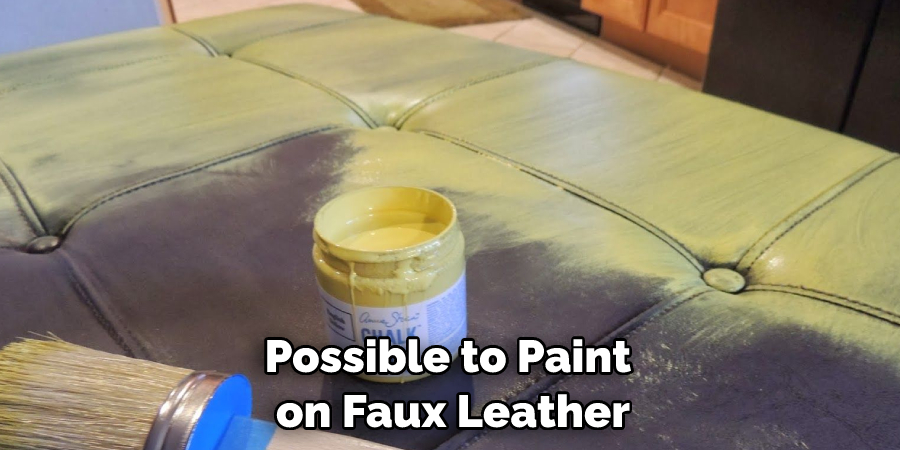
How Do You Remove Stains From Faux Leather?
It depends on the type of stain and material of the faux leather. First, try gently wiping off any excess residue with a damp cloth. For tougher stains, use a mild soap and water solution or a faux leather-specific cleaner. Avoid harsh chemicals and scrubbing too forcefully to prevent damaging the material. If the stain persists, consult a professional for further assistance.
Can Faux Leather Be Waterproof?
Some types of faux leather may have a waterproof coating, but it is important to check the product specifications. To increase water resistance, you can also use a protective spray meant for leather materials.
However, it is still important to avoid getting the faux leather excessively wet and quickly wipe off any spills.
Can You Use Vaseline on Faux Leather?
No, Vaseline or petroleum jelly can actually damage faux leather and should not be used on it. Stick to using leather-specific products for conditioning and maintaining the material.
Always use proper products and techniques when caring for your faux leather to prevent damaging it and causing peeling. If you are unsure of how to properly care for your faux leather item, consult a professional or do further research. Happy faux leather caring!
Conclusion
Faux leather is a great material for clothing and furniture because it looks like leather but is more affordable and easier to care for. The downside of faux leather is that it can peel, which ruins the look of the item.
Though faux leather is a great alternative to the real deal, it doesn’t always stand up to wear and tear as well as its genuine counterpart. If you’re looking to prevent your faux leather from peeling, there are a few things you can do. You should clean it regularly with a mild soap, avoid getting it wet and keep it out of direct sunlight. With proper care, your faux leather will last for years.
By following the above tips, you can extend the life of your faux leather items and prevent them from peeling. Hopefully, the article on how to prevent faux leather from peeling has been helpful in caring for your faux leather items. Happy faux leather caring!

